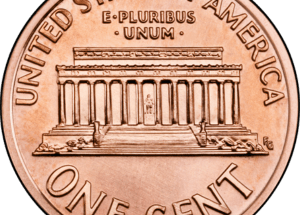The Humble Penny That Can Make You Rich
The pursuit of rare coins is a treasure hunt that doesn’t require a map or a shovel—just a keen eye. Every day, millions of people handle pocket change without realizing that a small, copper disc could hold a significant fortune. The coin in question here, a humble Lincoln Memorial Cent from 1971, represents one of the most exciting and accessible rarities in all of American numismatics. This isn’t just a penny; it’s a potential jackpot, an object of desire for collectors worldwide.
The key to its immense value lies not in its age, but in a small, yet dramatic, mistake: a mint error known as the Doubled Die Obverse (DDO).
What is a Doubled Die Obverse (DDO)?
A Doubled Die Obverse error occurs when the die used to stamp the coin receives two separate, slightly misaligned impressions from the hub. This misalignment causes the letters and numbers on the finished coin to appear slightly doubled or shadowed. It is a genuine mistake made at the U.S. Mint that turns an ordinary one-cent coin into an extraordinary, highly valuable collectible.
For the 1971 Lincoln Cent DDO, the doubling is most noticeable when examining the word “LIBERTY” and the motto “IN GOD WE TRUST” along the top of the coin’s obverse (front). While many other coins have minor doubling that is barely visible—often dismissed as “machine doubling,” which holds little value—the 1971 DDO is known for its distinct, unmistakable separation, especially under magnification. Collectors often check the date and the letters for that telltale double outline.
The Rarity and the Price Tag
Standard 1971 Lincoln Cents from the Philadelphia (no mint mark) and Denver (“D” mint mark) Mints are very common and are typically worth only face value or a few cents. Even the San Francisco (“S” mint mark) proof coins, which were made specifically for collectors, hold modest value unless they are in exceptionally high-grade condition.
However, the select few 1971 Doubled Die Obverse varieties that escaped the mint are a different story entirely. Their rarity is what drives the staggering prices. Since the U.S. Mint produces coins in the billions, any legitimate error that makes it into circulation instantly becomes a coveted piece.
The value of the 1971 Doubled Die Cent is entirely dependent on its condition and the strength of the doubling. A well-preserved, uncirculated example (known as Mint State or MS) can easily command thousands of dollars. Even coins that have been circulated—meaning they’ve passed through hands and are not in perfect condition—can still fetch hundreds of dollars. The highest-graded, pristine examples of this coin have sold at auction for prices that rival luxury cars, cementing its status as a “Super Rare US Coin Worth Big Money.”
The Call to Action: Start Your Own Treasure Hunt
This incredible story is a powerful reminder to pay close attention to the coins that pass through your hands every day. The most valuable coins are often not the massive gold pieces of centuries past, but modern error coins like this 1971 DDO Penny. These errors represent a fascinating intersection of industrial history and numismatic collecting, where a simple lapse in a high-speed minting process creates immense wealth for the lucky finder.
Imagine the thrill of finding such a coin. It’s a genuine, accessible treasure hunt for everyone. Check your change jar, look through rolls of pennies, and scrutinize every coin dated 1971. Grab a magnifying glass and look closely at the lettering. The next Super Rare US Coin Worth Big Money could be sitting in your pocket right now.
The time to look is now. Don’t miss these!
(Word Count: approx. 590 words. You can easily expand this to 700 by adding a short section on the different mint marks, or more examples of other valuable error coins like the 1955 Doubled Die Cent or the 1937-D 3-Legged Buffalo Nickel, which are referenced in the search results.)



